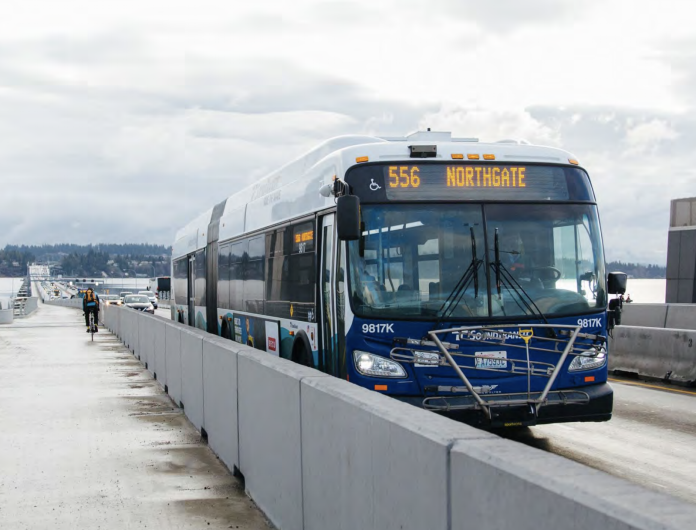Sound Transit has released its pandemic-impacted draft 2021 service plan. The pandemic has and continues to leave the agency with a fraction of its usual ridership, dropping from 160,000 on March 2nd to 22,000 on an average day in April. Ridership has been slowly returning, but the Sound Transit estimates that it’s barely around 30,000 riders per day.
Through the depressed ridership, Sound Transit has been learning and reacting to ridership changes. Priority has been placed on popular routes. Simultaneously, the agency has been balancing equity, coverage, and all-day travel.
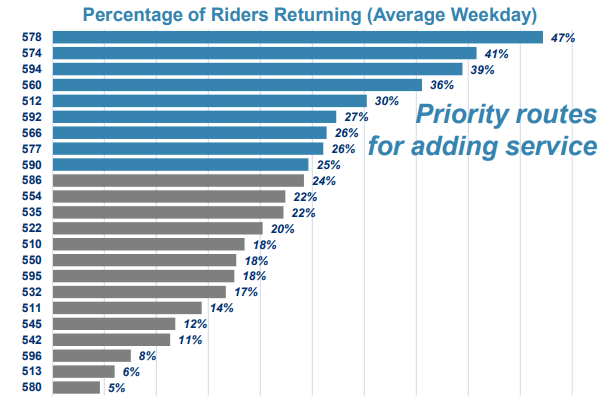
Planning 2021 service, Sound Transit is assuming continued pandemic impacts, low demand, and revenue decline. Uncertainty remains for changes in ridership, social distancing, and return of in-person for schools and major employers. For next year, the transit agency is focusing on sustainable service, equity, rider feedback, and dynamically accommodating ridership changes.
Northgate Link restructure and other service changes
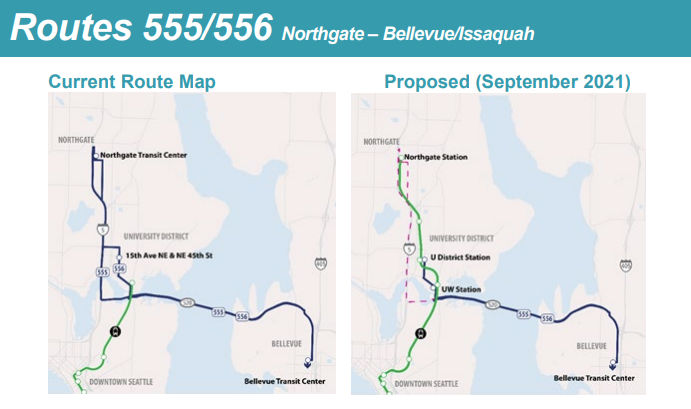
With the Northgate link light rail expansion completing in 2021, routing changes are coming to seven ST Express routes. Routes 511, 512, and 513 will be routed to Northgate Station. Route 522 will be routed to Roosevelt Station and Routes 542, 555, 556 (the latter two of which are currently suspended) will be routed to the new U District Station.
Expecting ridership changes with Northgate Link, Sound Transit will be investing in service increases for Routes 522 and 590. Route 522 will have improved midday and weekend frequency. Route 590 will also be improved with resources pillaged for Route 586’s suspension.
When the Northgate service launches in September 2021, Sound Transit is also planning to roll out four-car trains on Link to support increased ridership. Service levels themselves are expected to remain similar to the planned September 2020 service change. Service otherwise on Sound Transit should see only modest changes with a few improvements on trips for select routes as demand picks up. Service in the South End will be much closer to regular service levels since ridership and reliance on transit remains comparatively high to northern subareas.
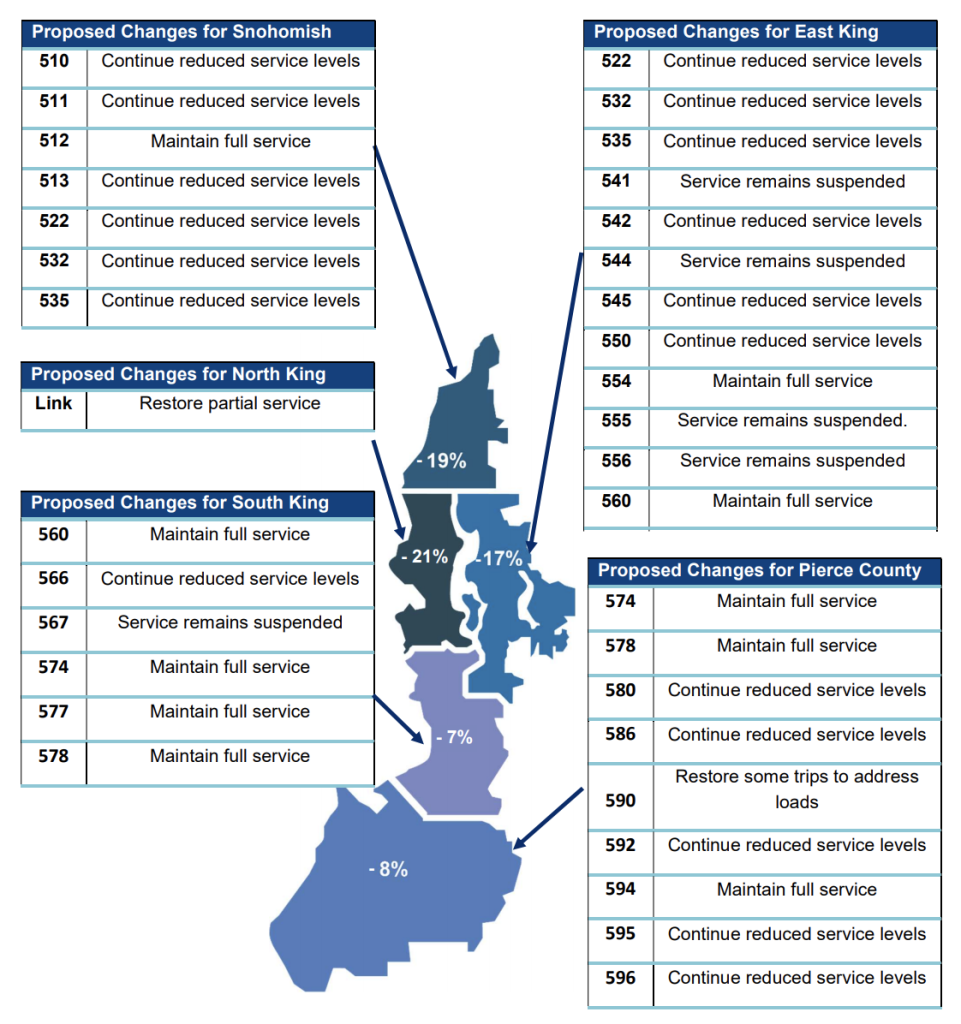
All of the proposed service change in the draft plan and the 2021 service plan website.
A focus on equity through the process
In a September 3rd presentation, Sound Transit put the most emphasis on equity. A draft equity analysis (also known as a Title VI analysis) was presented. The Federal Transit Administration (FTA) requires analysis documents of how a service change impact people of color and low-income populations. Service for these populations are of high priority for the 2021 plan due their higher dependency on public resources like public transit.
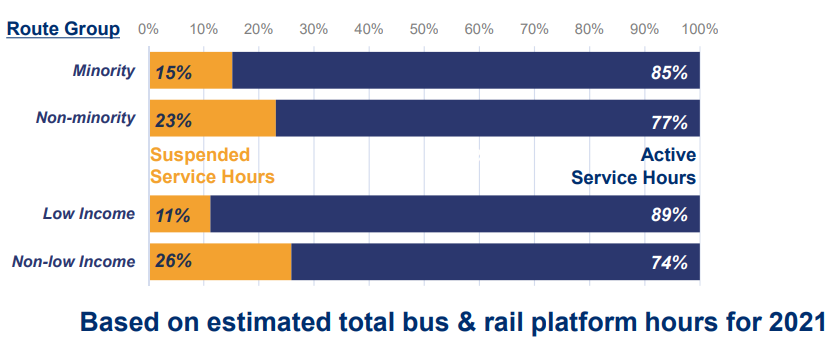
The FTA’s intent is “full and fair participation in … decision-making”. Sound Transit is planning to reach out to all community, hoping to reach populations that typically not tapped into the agency’s operations. Advertising in non-White media, translations, and Language Line services are planned.
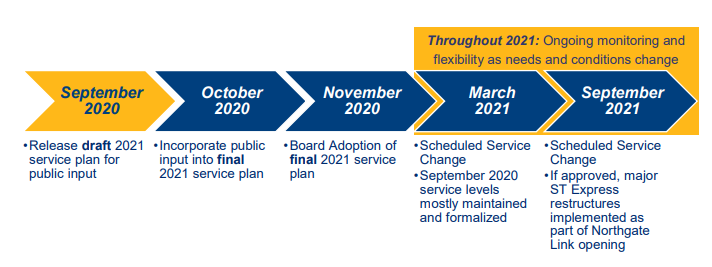
A virtual public meeting is planned on September 24th at noon. Follow the progress of the 2021 Sound Transit Service plan at its website or with Sound Transit’s social media. They’ll be incorporating feedback in October, and the board will adopt a final plan in November.
Shaun Kuo is a junior editor at The Urbanist and a recent graduate from the UW Tacoma Master of Arts in Community Planning. He is a urban planner at the Puget Sound Regional Council and a Seattle native that has lived in Wallingford, Northgate, and Lake Forest Park. He enjoys exploring the city by bus and foot.

